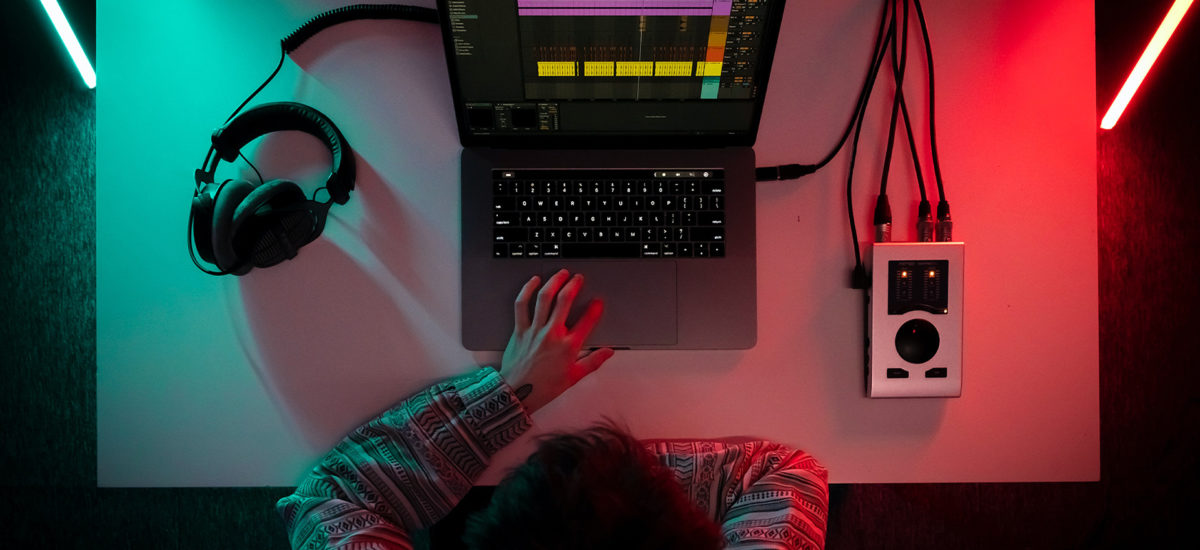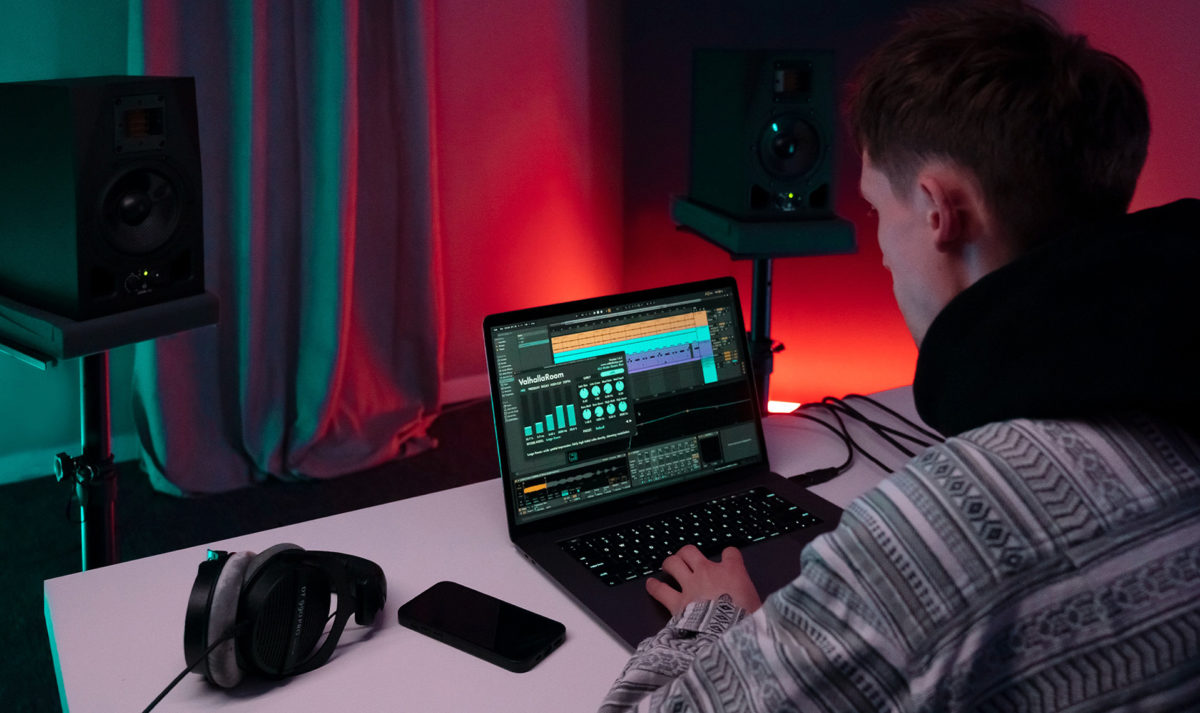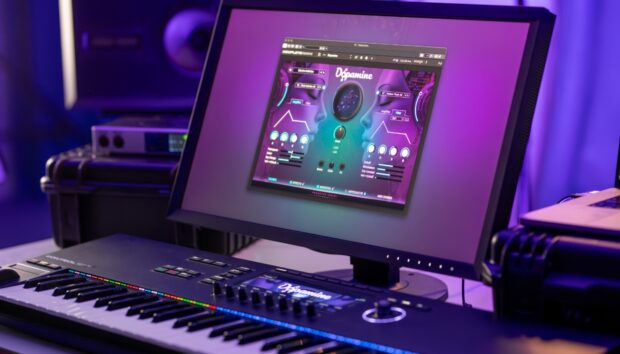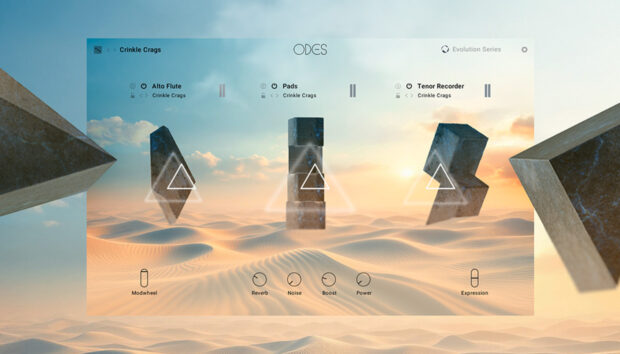
Music production is a complicated and challenging endeavor, and there are some challenges that everyone faces, no matter whether they’re a seasoned pro, or a newbie. You might be struggling with some, and not even realize it, or you might think you’re the only one. We’re going to clear up some of the most common mistakes producers make, and point out how to overcome them.
1. Flattened drums
This is extremely common, and not just among newer producers. Hard-limited percussion is still a crutch for a lot of producers trying to get everything LOUDER. Compression is a great tool, and it does wonders on percussion especially. But sometimes “too much of a good thing” is just simply too much. The greatest tool in your studio is also the most important to use properly. Learning how to implement good compression that enhances dynamic range and balances the energy of your productions will make far more impact!
A great way to make sure you’re not over-compressing is to learn how to use parallel compression, and to test out different attack and release settings on your compressor. Start with compression ratios between 2:1 and 4:1, and only increase the ratio if absolutely necessary.
2. Boosting instead of cutting
We’ve all been in the familiar predicament, asking ourselves “is [x] too quiet?” It’s a natural part of the production process – as you’re making a track, the ‘star’ element isn’t getting the spotlight. Of course, when we want to hear something more, we turn it up! This is where our instincts fail us. Each time we turn something up, we notice something else that recedes. Pretty quickly, we’re turning a few other things up louder. And then just one or two more, and we’re getting closer to the ceiling.
When you feel something needs to come forward, try pulling everything else back. It feels counterintuitive, but it will preserve more of the good parts of your project without running everything into the red.
3. Cut-off transients
Digital production has revolutionized music. It’s given us countless irreplaceable tools. But often we forget to check whether those tools are giving us everything we expect. One danger that often happens is producers will bounce or render a piece of audio, without checking whether their start point is correct. Some DAWs have an automatic feature that gives a gentle fade in to a new sound. This often means that the first sound in a mix is blunted. A great example is a dance track that starts with a kick drum, but that sound is cut off, because the producer didn’t check their clip fades.
The best way to avoid this is check the clips of all your audio files, especially drums. Another good practice before mastering is to add ~100 milliseconds of silence to the beginning of your session, to make sure nothing is cut off in the rendering process.

4. Nothing happens
This is a creative problem, and it might be controversial in some fields. A piece of music needs to change over time, even if subtly. While a lot of great minimalist approaches aim for tracks that remain constant and steady throughout their arrangement, even the most minimal tracks still have changes. The best loop in history will still get weary with time – it might contain all you need for the length of a track, but small changes can do a lot. Drop out a piece of percussion for a few bars, then bring it back and drop out the kick, bring that back and add a filter to your hook, open and close the filter while the bassline fades up, drop everything out and let your favorite element of the track shine alone for 16 bars, then bring everything back. It’s still a totally minimalist approach, but makes the most of the few elements you’ve got.
A great way to get ideas for what can happen in your arrangement is to listen to other great tracks, with a notepad in hand. Each time you hear something change, write it down. By the time you’ve finished listening, you’ll probably have a great set of ideas to apply to your own next track.
5. Too many sounds
“This is sounding decent. But it just needs one more melody…” – Everyone (1645-2022)
We’re all guilty of this one. It’s an irresistible solution to the most common problem in music production and it’s only getting harder to resist. With so many synths, samples and sounds to choose from, and unlimited channels on our DAW, it’s easy to keep adding ingredients. But adding 12 toppings doesn’t make a better pizza – it just makes it harder to eat. Our ears can only listen to so many things at once. This means we have two choices, reduce the number of elements in a track, or alternate them across the arrangement. This works great with our arrangement challenge above. Can’t decide which melody to cut? Deploy them at different times in your track – you’ll find a favorite comes forward on its own.
A great exercise is to follow the advice of fashion giant Coco Chanel who said “Before you leave the house, look in the mirror and take one thing off.” Listen to your track, and mute one channel at a time. The sound you miss the least is the sound your track can benefit from losing completely.
6. Crowded EQ
Another problem similar to overlapping ideas is overlapping sounds. If your bass is taking over your midrange, then where will your hook be? If your vocals have too much bass, what happens to the rest of your low end? As you’re composing and producing, ask yourself “where does this sound ‘live’ in the mix?” Every sound needs its own “place” where it can shine. Drums tend to be able to dance around this question, as transients are momentary, but melodies, bass lines, vocals, pads all have zones where they function best. Try to make decisions about where each part lays.
A great way to carefully balance the different layers of your track is to use shelf EQs. You can reduce the brightness of your bass without cutting it off completely. Or your can reduce the bottom end of your melody to give more space to your bass. Sometimes a drop of 2 dB can be enough to get something to cooperate better with everything else in the mix!

7. Relying completely on presets/samples
Have you ever been to a restaurant that serves food from a jar you can buy at the supermarket? The disappointment is similar when you hear a whole track made of sounds and samples you can get off the preset menus in your DAW. If you want your ideas to shine, it goes a long way if they don’t sound like anyone else. You don’t need to be an expert in granular synthesis or have a massive modular rig to make something sound a bit unique. Even classic sounds can use a bit of an update – rock guitarists spend loads of energy tweaking their tone to sound a smidge different from the others. Small changes will make a big difference, and will help you feel more in control of everything you’re doing.
8. Everything at once all the time
This is a bit of an abstract problem, in that it can apply to a number of aspects of production. Is your track trying to be all things at the same time? Is it a mellow-peak-time-banger-chillout-anthem? It might try to be all of these, and succeed at none. Which matters more: your hook or your bass line? If you said “both” you might need to step back. The best tracks are the ones with a great idea that’s been perfectly stated, and no interference.
Similarly, a lot of producers feel pressure to be everything to all people. You might be able to switch from writing bangers to making chill vibes, but will your audience follow you to both places? Are you sure that your strength is in both sounds at once? Find what inspires you the most, and keep drilling in that spot until you strike gold. It might take time, but you’ll get further there than drilling 30 holes an inch deep.
9. Never finishing!
This is the BIGGEST pitfall, and if you didn’t see this coming, then you might be reading this to avoid finishing those loops on your computer. The single most important thing that defines a producer is the tracks they finish. We all know a dozen folks who talk about the awesome tracks they made that we never hear. This is something you need to hear, and it might sting. It’s easier to imagine your good loop is a killer track than it is to finish it. You won’t know if your track is good unless it’s done. And learning how to finish your ideas is the most important skill you can develop. The best idea in the world will sit in a hard drive forever if you haven’t learned the skills above and put them to use to finish it.
And if you do manage to avoid this last one, you may want to head over to our friends at iZotope and check out some of the potential mixing pitfalls that await you in the next stage.
These are some of the mistakes we all make at times. But don’t let this discourage you – each new project is an opportunity to get it right! Hopefully these tips encourage you to avoid the pitfalls that have derailed you in the past. So get back in there and make more music!















